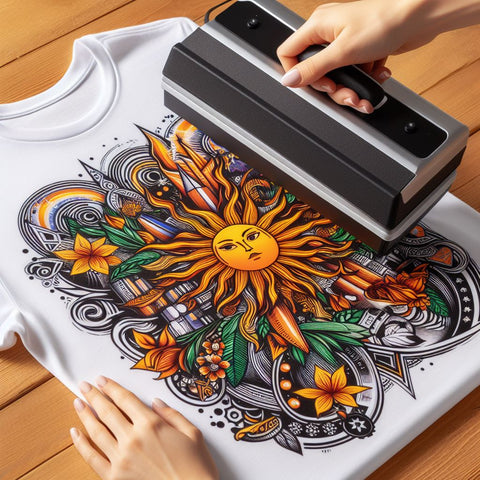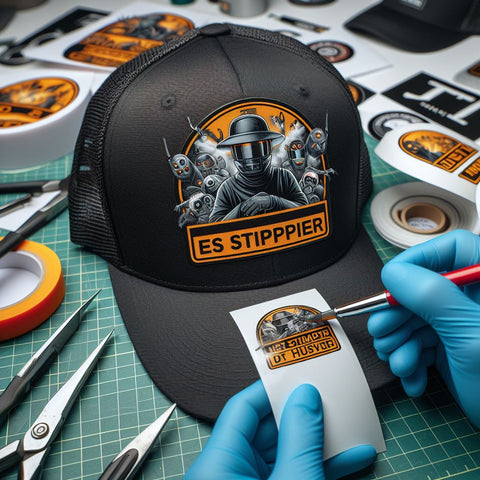Custom t-shirts have become an incredibly popular fashion statement, and DTF transfers have revolutionized the way these shirts are printed. DTF prints, or direct to film transfers, offer vibrant colors, excellent durability, and a softer feel compared to other printing methods. However, like any printing process, DTF printing may encounter some troubleshooting challenges along the way.
Common Issues with DTF Transfers
1. Wrinkling or Curling of the Film
The first issue you might encounter is the wrinkling or curling of the film during the printing process. This problem can be caused by excessive humidity in the printing environment or incorrect temperature settings. To resolve it, ensure that your printing room has proper ventilation and humidity control. Adjusting the temperature settings may also help in preventing this issue.
2. Poor Color Vibrancy
If you notice that the colors in your DTF prints appear dull or lack vibrancy, there are a few potential causes. Firstly, check your color management settings on your printer and computer. Make sure you're using the correct color profile and that your printer is calibrated regularly. Additionally, consider the quality of your DTF transfers and ensure that you're using high-quality materials for optimal results.
3. Adhesion Problems
Adhesion problems occur when the transfer doesn't stick properly to the substrate. It can result from incorrect curing times, poor quality adhesives, or inadequate pressure during the pressing process. To improve adhesion, double-check that you're following the recommended curing times for your DTF prints and using adhesive of good quality. Additionally, adjust your heat press settings to apply consistent pressure.
4. Color Bleeding
Color bleeding is when multiple colors of the DTF print mix together, resulting in a blurred or messy design. This issue typically occurs when the ink used for printing is not properly cured. Ensure that you're using the correct curing temperature and time for your transfers. You may need to experiment with different settings to find the ideal combination for your specific DTF prints.
5. Cracking or Fading
Cracking or fading of DTF prints over time can be a frustrating problem. These issues usually arise from inadequate curing, improper washing, or using low-quality materials. Check that your curing process is effective and that you're using high-quality DTF transfers. Additionally, instruct your customers on proper washing and care instructions to avoid premature cracking or fading of the prints.
Preventing DTF Transfer Issues
Now that you're aware of some common issues with DTF transfers, let's explore a few strategies for preventing these problems:
1. Source High-Quality Materials
Using inferior quality DTF printing materials can lead to several issues with your prints. Invest in high-quality films, inks, and adhesives to ensure durable and vibrant results.
2. Calibrate Your Equipment Regularly
Regularly calibrating your printer and computer will help maintain accurate color reproduction and minimize color-related issues, such as poor color vibrancy or bleeding.
3. Follow Printer-Specific Recommendations
Every printer may have different requirements for optimal DTF printing. Consult your printer's manual or reach out to the manufacturer for guidance on ideal temperature, pressure, and curing time settings.
4. Conduct Test Prints
Before executing a full print run, it's always a good idea to conduct test prints. This allows you to identify any potential issues and make necessary adjustments before moving forward with larger orders.
5. Provide Proper Instructions to Customers
When selling DTF printed custom t-shirts, provide your customers with detailed washing and care instructions. This will help them prolong the lifespan of their garments and minimize issues like cracking or fading.
Dedicate a Shirt to Troubleshooting
Even with the best precautions, DTF transfer troubleshooting may come up occasionally. Consider dedicating a shirt or two for testing and troubleshooting purposes. This will allow you to quickly address any issues that arise and ensure that only flawless prints make it onto customer merchandise.
By following these tips and best practices, you can minimize the chances of encountering significant issues with your DTF prints. Remember, troubleshooting is a learning process, and with time and experience, you'll become more adept at resolving any challenges that come your way!
Enhance Your DTF Print Quality Today!
DTF printing offers a fantastic opportunity for custom t-shirt businesses to produce high-quality prints with vibrant colors and exceptional durability. By implementing the troubleshooting strategies mentioned in this guide, you can further enhance your print quality and customer satisfaction. Don't let minor issues hold you back. Embrace the world of DTF transfers and witness your business flourish!





Comments (0)
There are no comments for this article. Be the first one to leave a message!